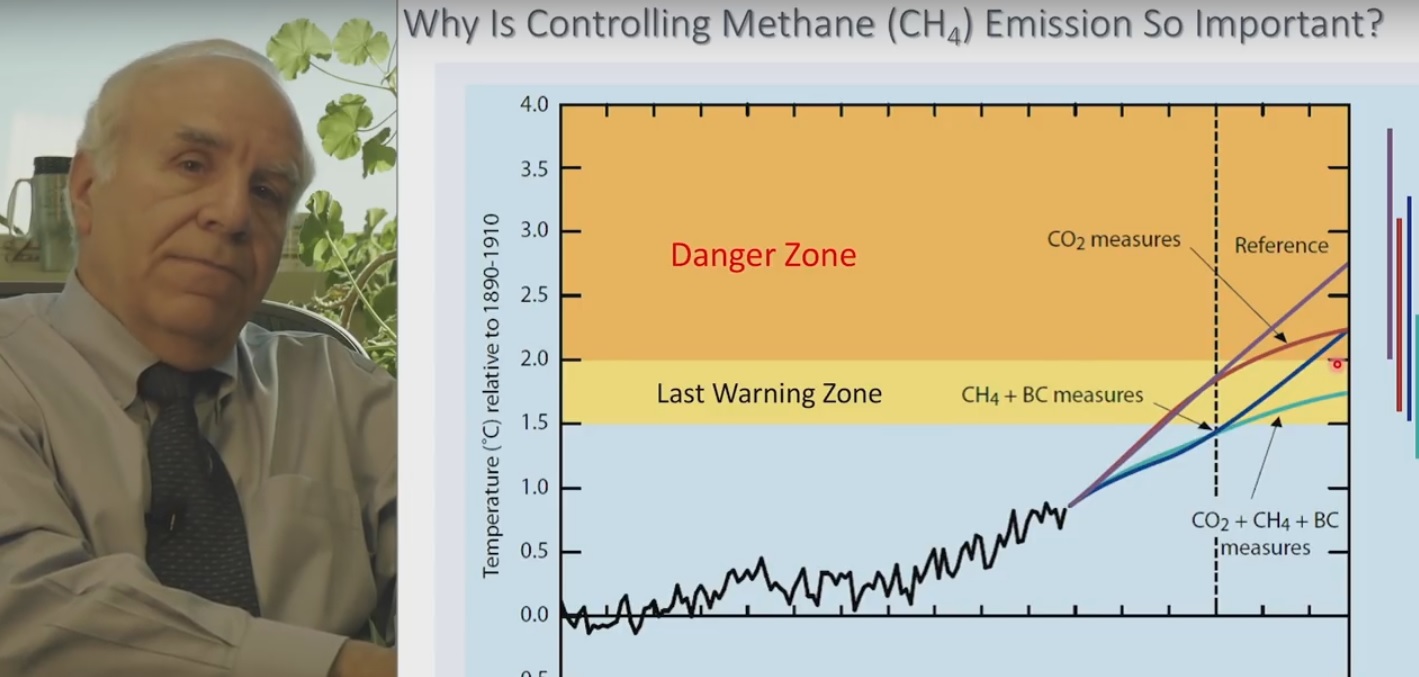In 2011, a Cornell University research team first made the groundbreaking discovery that leaking methane from the shale gas fracking boom could make burning fracked gas worse for the climate than coal.
In a sobering lecture released this month, a member of that team, Dr. Anthony Ingraffea, Professor of Engineering Emeritus at Cornell University, outlined more precisely the role U.S. fracking is playing in changing the world’s climate.
The most recent climate data suggests that the world is on track to cross the two degrees of warming threshold set in the Paris accord in just 10 to 15 years, says Ingraffea in a 13-minute lecture titled “Shale Gas: The Technological Gamble That Should Not Have Been Taken,” which was posted online on April 4.
That’s if American energy policy follows the track predicted by the U.S. Energy Information Administration, which expects 1 million natural gas wells will be producing gas in the U.S. in 2050, up from roughly 100,000 today.
The Difference of a Half Degree
An average global temperature increase of 2° Celsius (3.6° Fahrenheit) will bring catastrophic changes — even as compared against a change of 1.5° C (2.7° F). “Heat waves would last around a third longer, rain storms would be about a third more intense, the increase in sea level would be approximately that much higher and the percentage of tropical coral reefs at risk of severe degradation would be roughly that much greater,” with just that half-degree difference, NASA‘s Jet Propulsion Laboratory explained in a 2016 post about climate change.
A draft report from the Intergovernmental Panel on Climate Change (IPCC), which was leaked this January, concludes that it’s “extremely unlikely” that the world will keep to a 1.5° change, estimating that the world will cross that threshold in roughly 20 years, somewhat slower than Ingraffea’s presentation concludes.
Earlier models, like an often-cited 2012 paper published in the peer-reviewed journal Science, dramatically underestimated the rise in temperatures, when its projections are compared against more than a half-decade of additional temperature recordings, Ingraffea says. “Every one of these scenarios under-predicted actual global warming,” he points out as he describes the models presented in that landmark 2012 study.
“Whereas the worst-case scenario brought us to 1.5 degrees Centigrade in 2040,” he adds, “we’re almost there today.”
A Different Energy Future, if Not for Fracking?
So what happened?
Back in the late 1990s and early 2000s, U.S. natural gas production was flat or falling. If that trend had continued along the same track it was following from 2006-2008, then wind, solar, and other renewable energy sources might have had a chance to displace both natural gas and coal as major energy sources in America, according to Ingraffea.
Instead, the shale gas rush, propelled by hydraulic fracturing (fracking), swept across the U.S., with drillers snapping up land to drill for previously inaccessible fossil fuels locked in geologic formations of shale rock from coast to coast.
If the shale gas rush hadn’t disrupted trends around that time, Ingraffea estimates that the wind energy sector alone could have produced roughly triple the amount of energy expected by the end of this coming decade, a difference of roughly 400 gigawatts.
“We can easily see there is a loss of potential — large amounts of wind energy — because of the injection of shale gas into our energy economy,” Ingraffea explains in the lecture.
While the shale gas industry promised benefits like jobs and American energy security, Ingraffea notes, those benefits would have been almost exclusively aimed at just 5 percent of the world’s population, North Americans. But the harms will affect the remaining 95 percent of the world as well.
It’s an alarming message — even though the shale rush has stumbled somewhat as gas prices collapsed and many drillers went bankrupt, the cumulative impact of American fracking appears to have set the entire world on a collision course with climate change’s most extreme effects.
The climate is changing faster and more dramatically than it might have otherwise, and — far from serving as a bridge fuel — fracking huge amounts of natural gas has already played a significant role in pushing the world toward a vastly more difficult future.
Ingraffea’s lecture, part of the Spring Creek Project’s Bedrock Lectures on Human Rights and Climate Change series, can be viewed below:
Main image: Screenshot, “Shale Gas: The Technological Gamble That Should Not Have Been Taken” by Anthony Ingraffea, published on YouTube.
Subscribe to our newsletter
Stay up to date with DeSmog news and alerts






